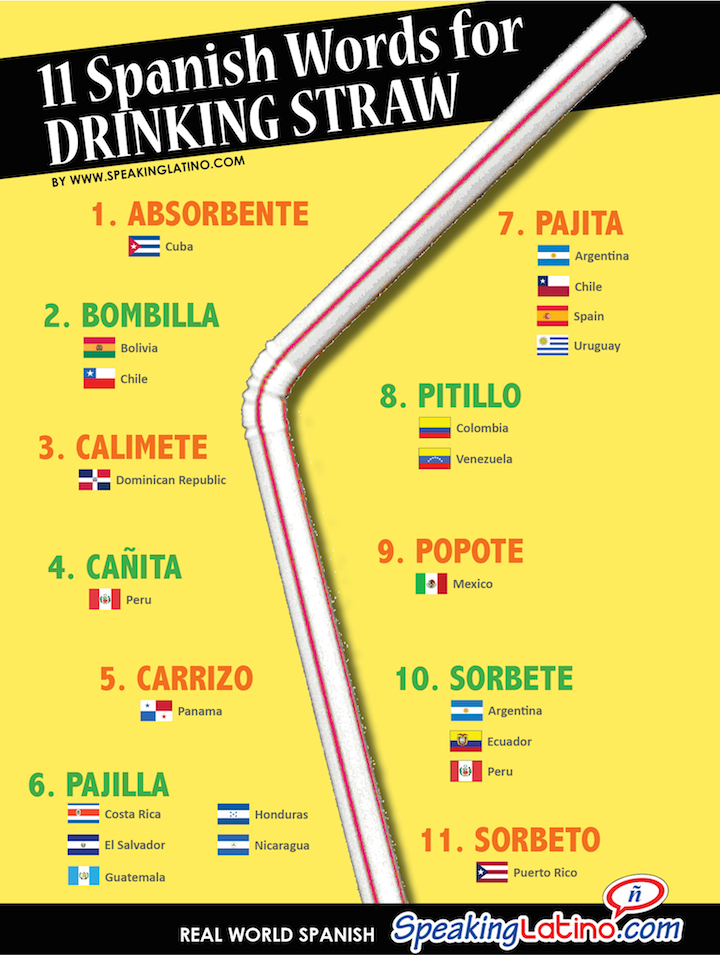If you are looking for how do you say drinking straw in Spanish the easiest word to start with is pajita, used in Spain and a few other countries. However, beware! pajita in other countries can be a vulgar term and does not mean straw. More on that below.
How you say straw in Spanish is yet another example that illustrates the diversity of the Spanish language. It’s amazing how a simple object is identified in different ways in Spanish speaking countries. We’ve put together this infographic “11 Spanish Language Words for DRINKING STRAW” to help anyone learning Spanish as well as native speakers to understand the vocabulary variations.
If you are learning Spanish, chances are you’ve learned the words for pajita or pajilla for drinking straw. Now with this collection of variations to say straw, you’ve added new words to your vocabulary!
11 Ways How to Say DRINKING STRAW in Spanish: Infographic


But also, people that speak Spanish as their first language have a lot to learn. If you are visiting another country in Latin America and need a drinking straw, make a note to avoid an embarrassing moment. Such innocent words in one country can have more vulgar meanings in other countries. And here’s a true story that could happen to you.
How to Say Straw in Puerto Rico
One of my good friends is Colombian and recently told me that when she came to Puerto Rico to study in college about 10 years ago, she got along so well with her new Puerto Rican friends. One night out, she asked for a pitillo for her soda. When everyone opened their astonished eyes and asked “WHAAAAAAAAAAT?!” she realized that something was really wrong. Pitillo is the word for straw used in Colombia, but in Puerto Rico it means a marijuana cigarette. The correct word she needed was sorbeto.
So, to avoid language misfortune, here is our list of Spanish words for drinking straw:
How to Say Straw in…
1. Cuba – Absorbente
2. Chile and Bolivia – Bombilla
3. Dominican Republic – Calimete
4. Peru – Cañita
5. Panama – Carrizo
6. Costa Rica, El Salvador, Honduras, Nicaragua and Guatemala – Pajilla
7. Chile, Uruguay, and Spain – Pajita
8. Colombia and Venezuela – Pitillo
9. Mexico – Popote
10. Argentina, Ecuador – Sorbete
11. Puerto Rico – Sorbeto

How to say straw in Costa Rica
On a recent stroll through Puerto Limón, Costa Rica this street vendor’s marketing efforts caught my attention. This vendor’s cart initially caught my eye because of the word pipa. While it’s a word I am familiar with, translated as pipe, it surprised me to see pipa in the context presented above on the vendor’s cart.
A quick question to the vendor answered my doubt. Pipa here refers to a drinking straw.
That response instigated this post. I have found that how you say straw in Spanish varies in almost every country I know, and this experience in Costa Rica only affirmed my other experiences.
Check out these other articles about the Spanish Language.
